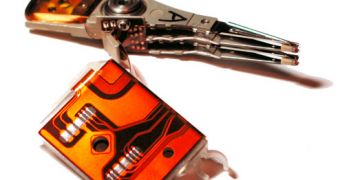Although everybody is taking into account the fact that HDDs may soon be replaced with solid state drives, some hard disk manufacturers continue to improve the performance of these devices. The 1TB HDDs are already available, although a bit pricey, and companies such as Toshiba and Fujitsu are planning important improvements for the next months.
First we learn that researchers at Toshiba and University of Tohoku in Japan claims to have discovered new methods for making new magnetic read/write heads that will increase the storage density from the 178.8Gb record of today, to more than 1Tb per square inch. The good ol' Japanese guys make extensive use of the nano-technological breakthroughs, as the Nanocontact Magnetic Resistance (NC-MR) will greatly improve the magnetoresistance of the HDD head. Current prototypes demonstrate a twice as large magnetoresistance ratio compared to today's read heads. Moreover, the improved technology allows for a decreased resistance that makes it possible to shrink the size of the heads.
Toshiba estimates that these new improvements won't reach the consumer market until 2012, but this would give solid state disks plenty of time to catch up and even largely replace the mechanical HDDs.
As far as Fujitsu is concerned, the other Japanese guys developed a new storage technology that will make it possible to increase the storage capacity of a regular HDD with up to 500%. Fujitsu thus claims that the basic idea is to store and read data on a smaller given surface. To be able to achieve smaller surfaces, Fujitsu has used some new material for its HDD platters to get better and more reliable data, even when storing the data on smaller surfaces. At present, Fujitsu is also dealing with the HDD's read/write heads that have to be optimized for handling the smaller bits. However, the Japanese company doesn't expect any product based on the new technology until 2009.
These improvements could come a little bit too late in the HDD area, because SSDs could go mainstream as soon as 2H 2008.

 14 DAY TRIAL //
14 DAY TRIAL //